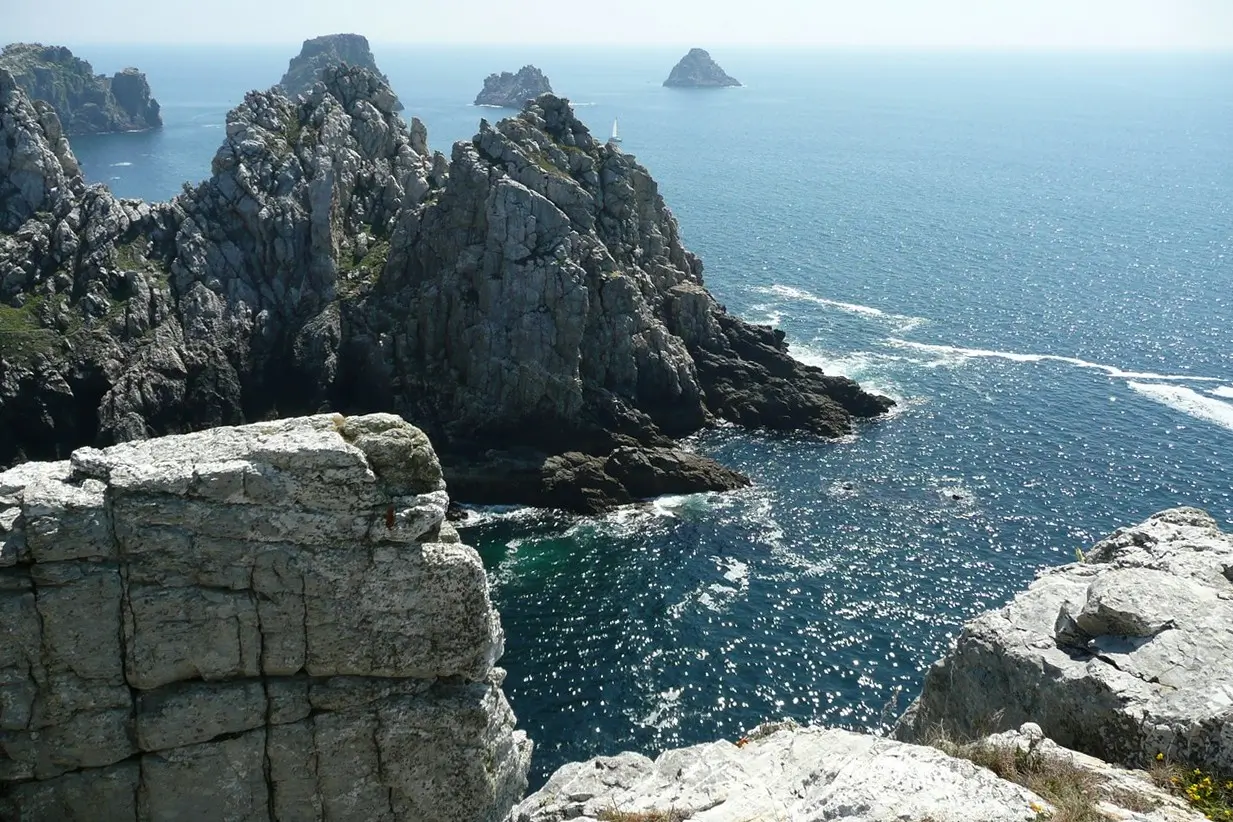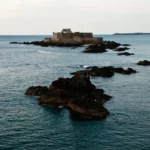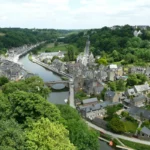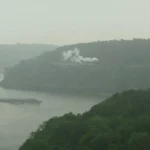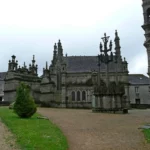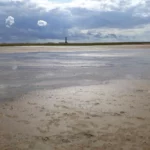Last Updated on 06/04/2023
The Crozon peninsula (Presqu’ile Crozon) was unexpectedly too large and expectedly beautiful. It is better to come here for two or three days and stay in Camaret or Morgat.
More about Brittany:
1. Ille et Villaine
2. Dinan, Cote d’Armor
3. Côte de Goelo
Pink granite coast (Cote de granit rose)
5. Finistere. Brest and Thegonnec
Mont Saint Michel
How to get to Crozon
You can get there in several ways.
First, by bus. Buses run from Brest (number 34, 1 h 45 min) and Quimper (number 37, 1 h 25 min, via Locronan). All buses stop at Camaret and Crozon, other cities – see timetable.
Secondly, you can get there by boat (see the schedule and rates on the website http://lebrestoa.com). It goes from the fortress of Brest or from Oceanopolis to Le Fret or Camaret.
In one day without a car, it is really possible to visit only one or two places, but not all, and one on the peninsula, and the second somewhere along the way.
For example,
– Plougastel-Daoulas `+ Daoulas + Pen-Hir.
– Pen-Hir + Locronan option is practically impossible, as the bus rarely stops in Locronan.
– options for Morgat Cave + Pen-Hir or Pen-Hir + Landevenneck Abbey may also be impracticable due to the bus that calls into the city two or three times.
Crozon peninsula map
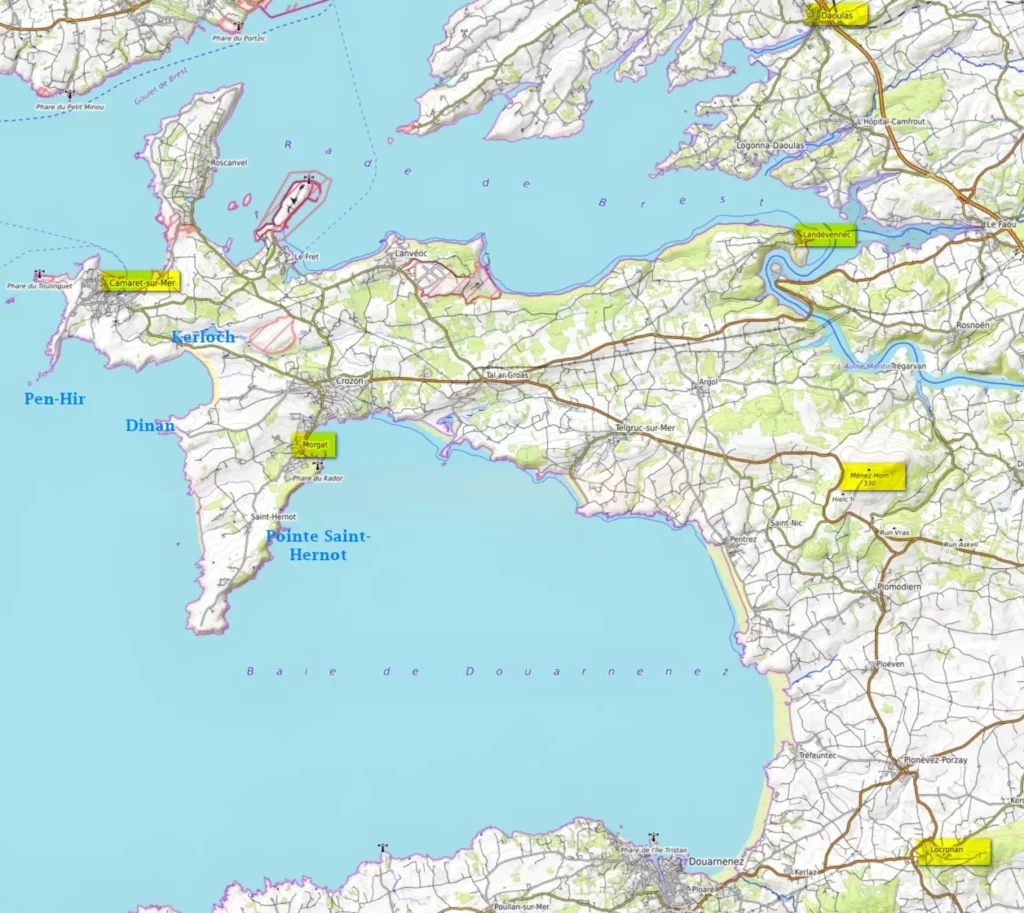
Cape Pen-Hir Point
The list of interesting places, in my opinion, is headed by Cape Pen-Hir. It is located 6 km from Camaret, if you walk along the coast, and almost twice as close if you walk straight ahead.
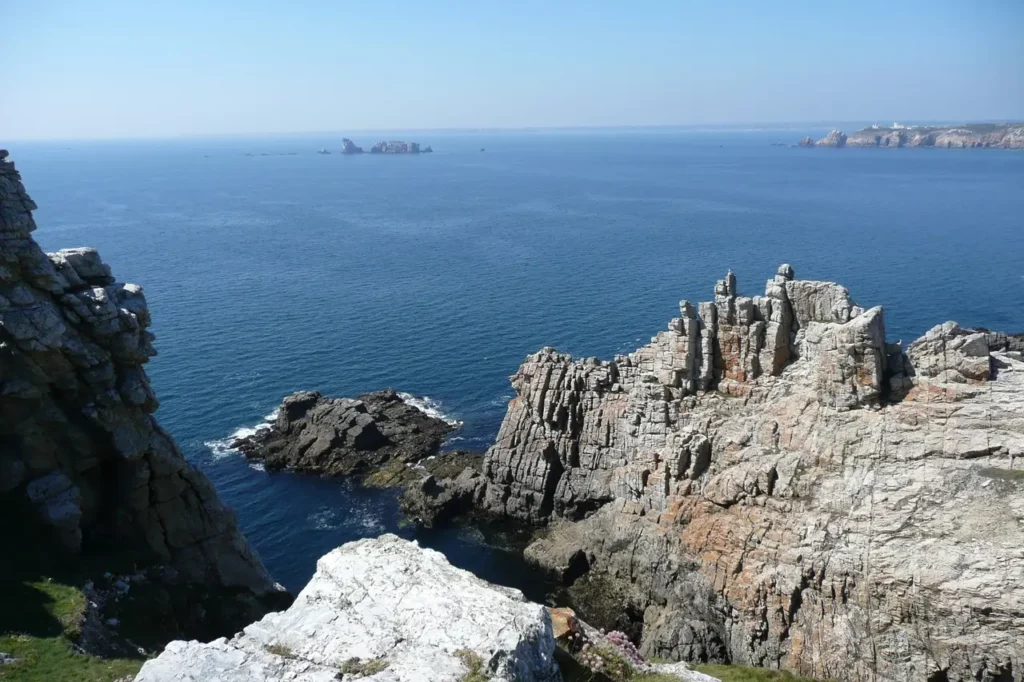
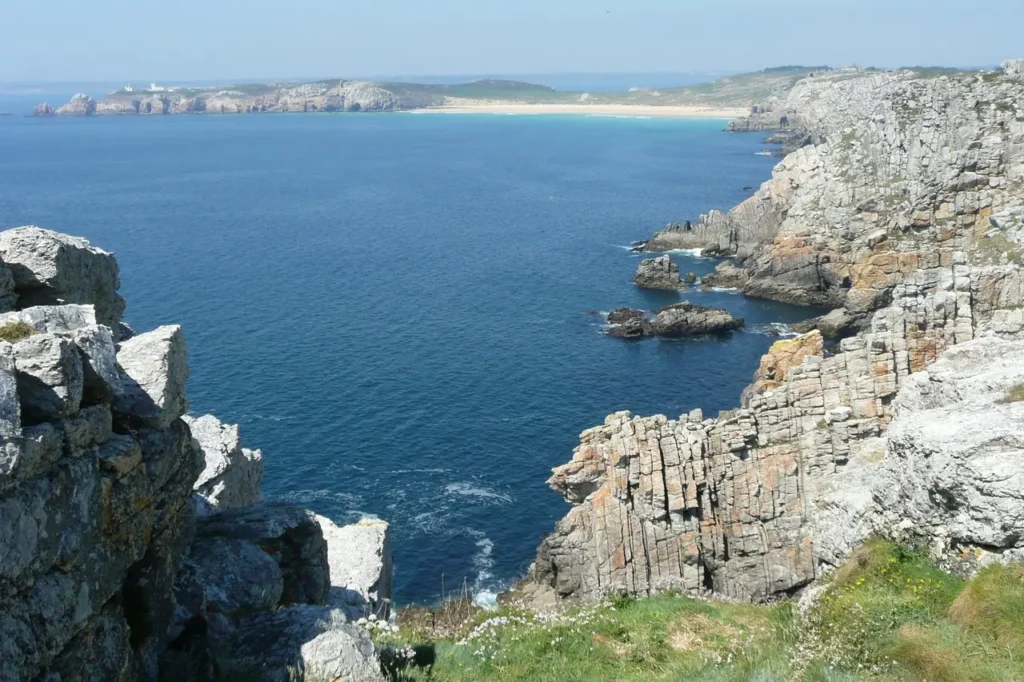

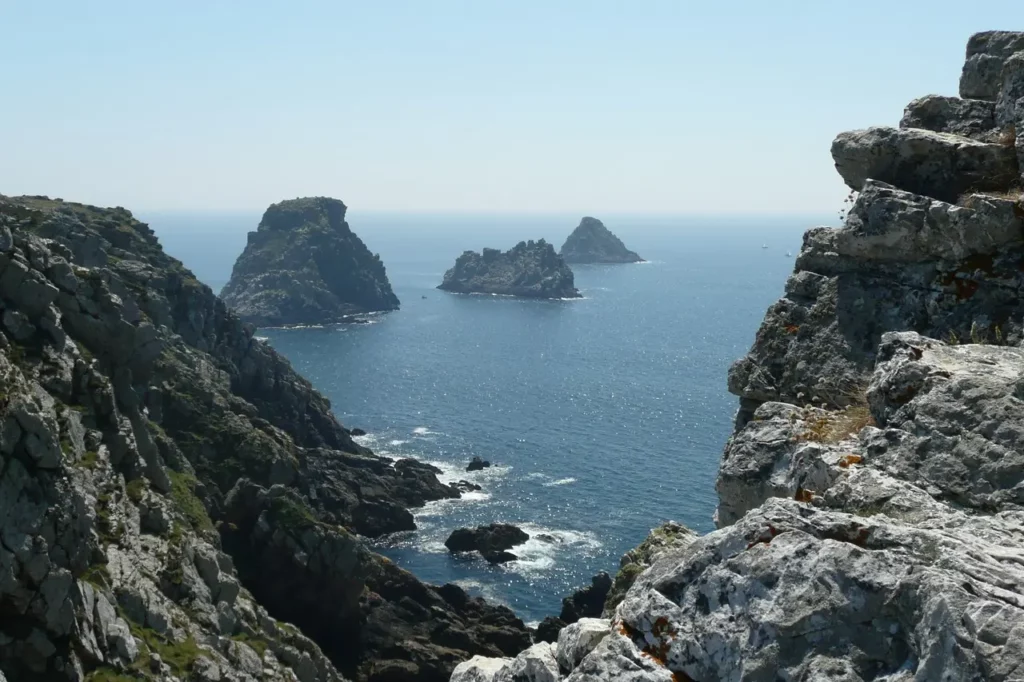
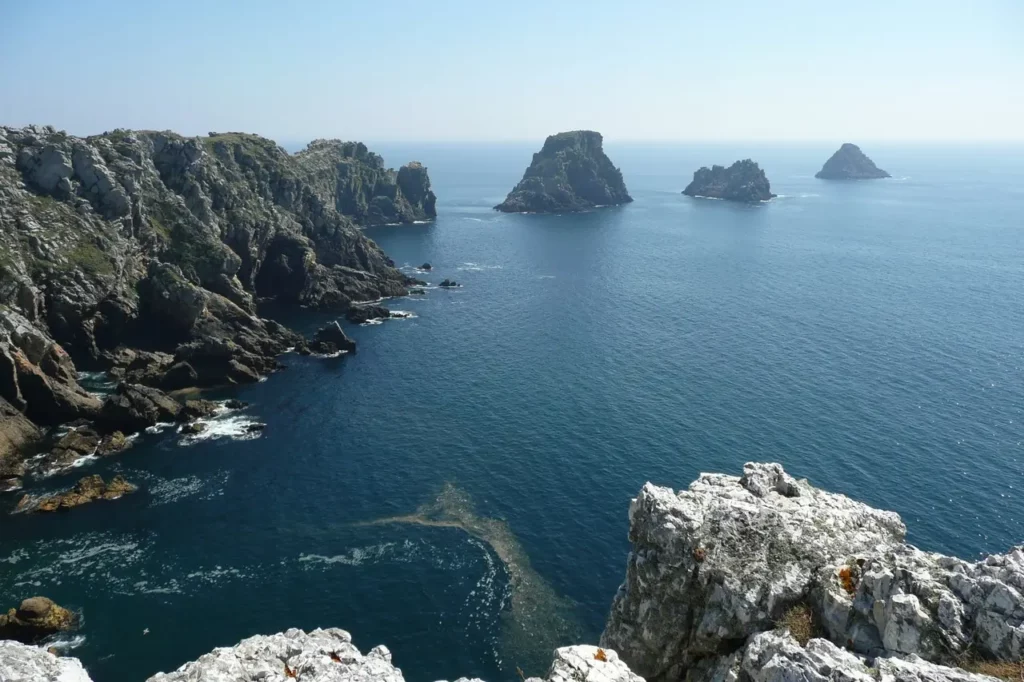
In the port of Camaret, it is worth seeing the Vauban tower, built in 1689 as part of the fortifications, and the Notre-Dame-de-Rocamadour church (16th century).
On the way, in addition to beautiful views, there will also be a field with menirs (Mehnirs de Lagatjar, 84 standing along the perimeter of the field of stones) and a memorial to the Second World War.
Pleasure boats go from Camaret to Brest, Oceanopolis, during the season there are also other places, for example, to the island of Ouessant (see website www.pennarbed.fr).
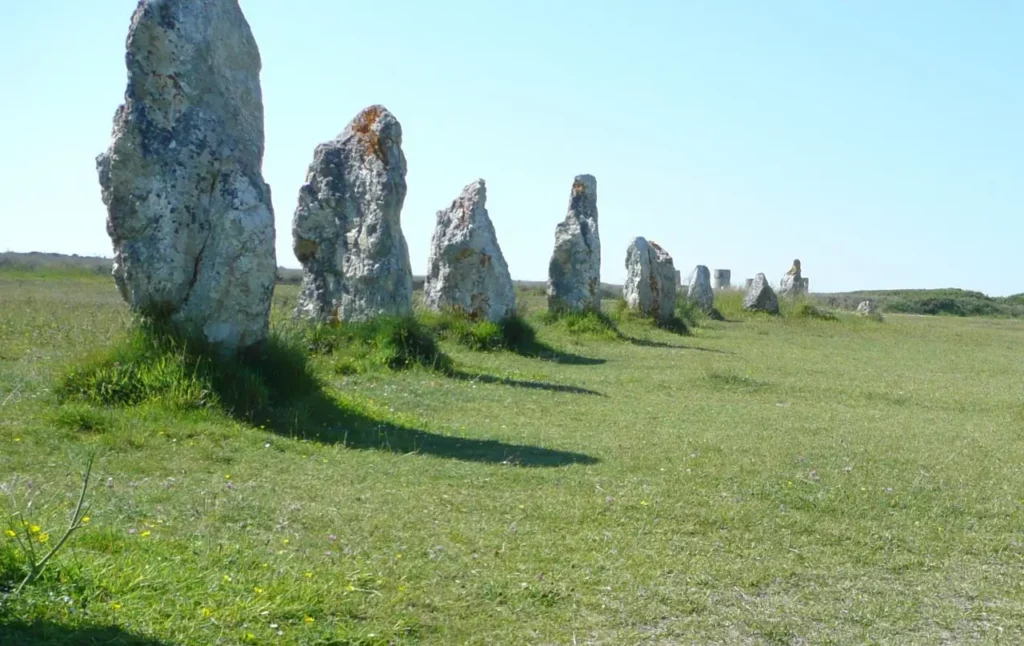
A couple more capes with beautiful views – Dinan and Pointe de St. Hernot.
The road to Cape Dinan passes by Etang de Kerloch, a bird sanctuary.
Distances:
- Pen-Hir – Kerloch 6 km,
- Kerloch – Cape Dinan 5 km.
- from Cape Dinan to Morgat or to Crozon for 7 km.
- Morgat – Crozon 3.5 km.
- from Morgat to Pointe de St. Hernot 4 km.
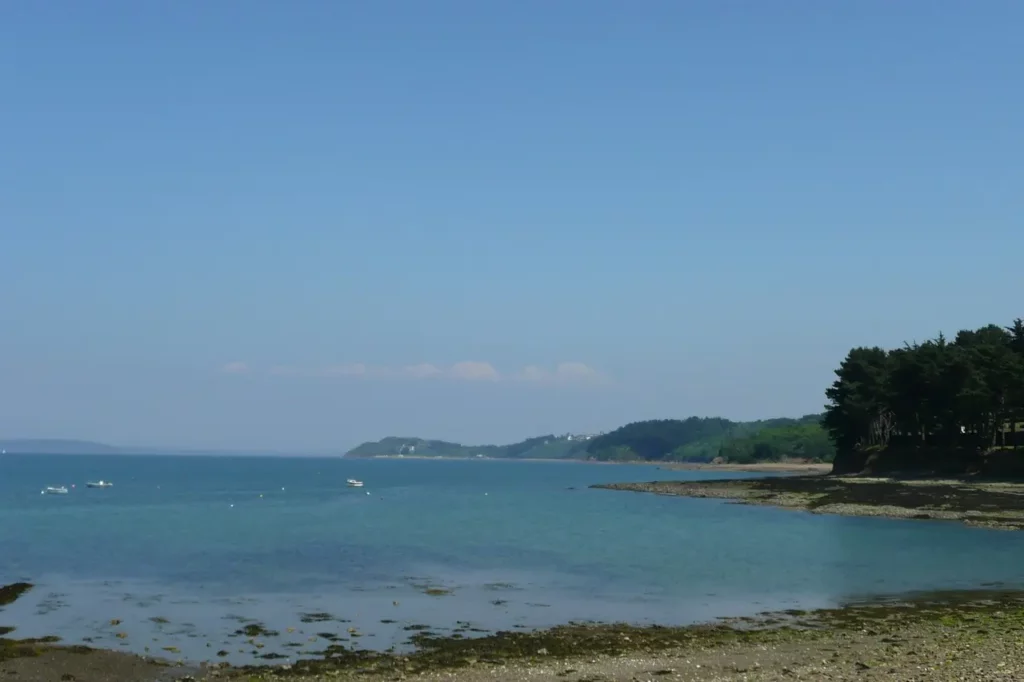
Morgat
In Morgat, you can visit the large caves (Grandes Grottes) by boat or on foot at low tide.
Crozon during its existence suffered from the Normans, several times from the British, then the Spanish and, finally, the Germans. However, in the church of St. Peter‘s preserved wooden altar of the 16th century. with a painting on the theme of 10 thousand martyrs.
Landevennec
Of the interesting places on the peninsula, we also mention the Menez Hom hill and Landevennec – the ruins of the abbey.
The abbey was built in the 5th century, in 913 it was ruined by the Normans, rebuilt in the 13th century and was finally destroyed during the French Revolution. All this time it was an important center of Christianity in Brittany, as the museum at the abbey tells about.
The Abbey is reachable by the bus 43 Brest – Camaret, however, it is worth carefully studying the schedule, as it visits the town quite rarely.
Menez Hom
You can’t get to the hill Menez Hom by public transport, but there is a parking lot at the very top. In my opinion, it is worth going there if the weather is clear and heather is blooming. In our case, there was a haze, and the heather had not bloomed yet, so the hill did not make much of an impression.
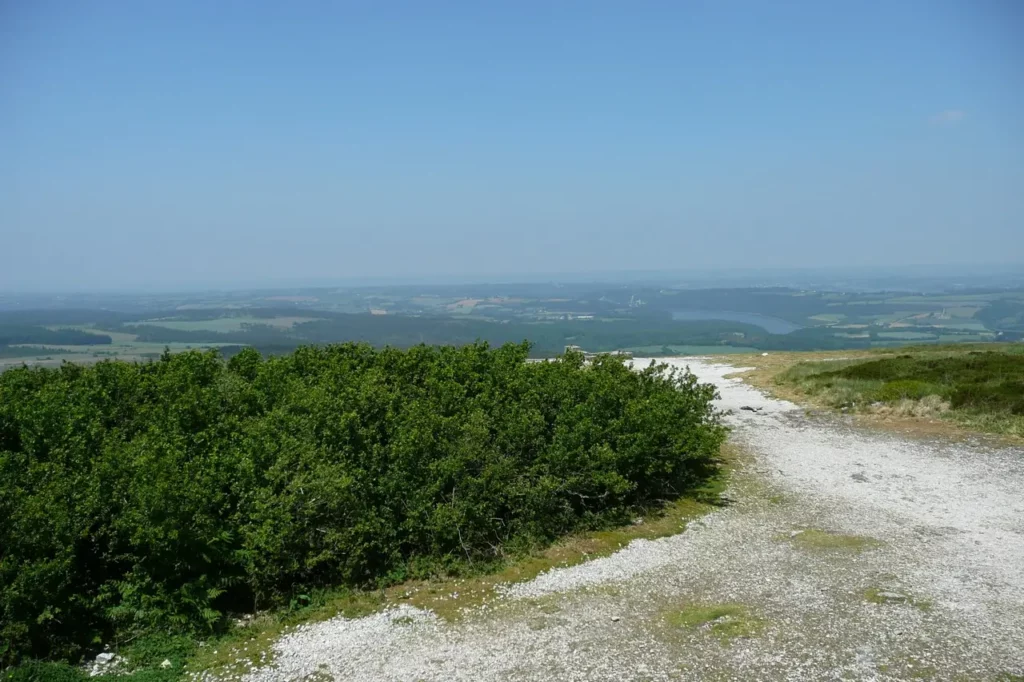
Follow me
From entertainment: the pool in Morgat and the park where you can climb trees, next to Crozon.
Locronan
Locronan is considered one of the most beautiful cities in France and is called “a small town with character”.
How to get there. By bus 37 Quimper – Kamare. It rarely come.
The name means “dwelling of St. Ronan” – after one of the most important Celtic missionary monks of the 5th century. The status of a city was given to the settlement by Anna of Breton in 1505, after she visited here as a pilgrim. 15-18 centuries – the heyday of the city, thanks to the production and trade of fabric for marine clothing.
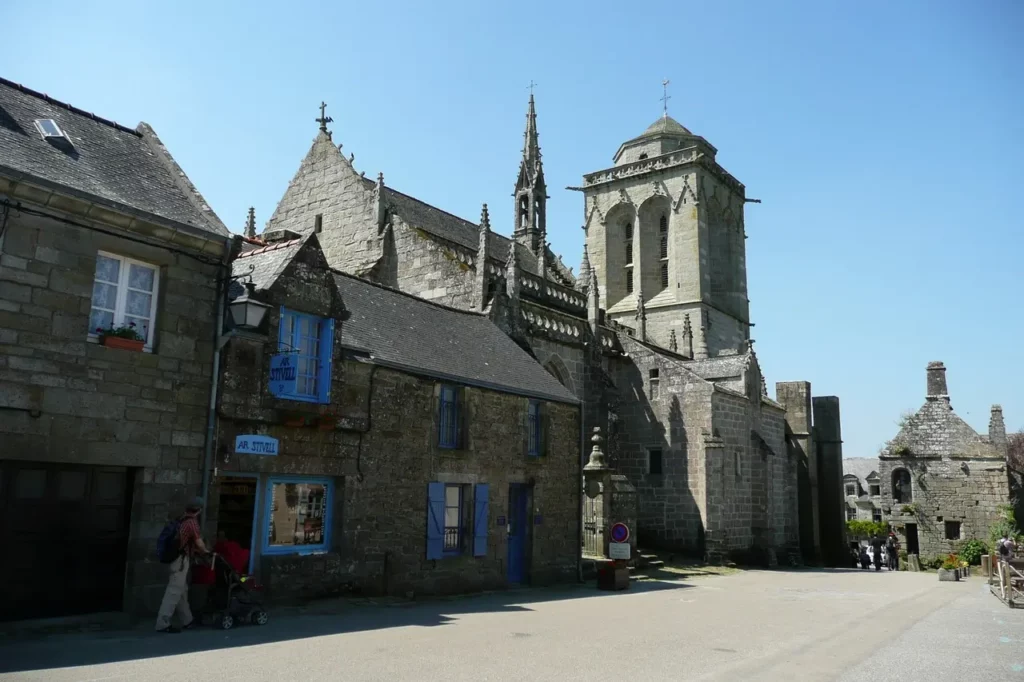
Actually, the historical part belongs to this period. There is a feeling that time has stopped in it and an active life is over. On the streets there are only rare tourists, from the locals there are only sellers in shops and creperie. And those, it seems, also came here, just not to look, but to work.
From creperie, we can recommend Ar Billig Tomm on rue Charrettes – here we found the most delicious pancakes we ate in Brittany.

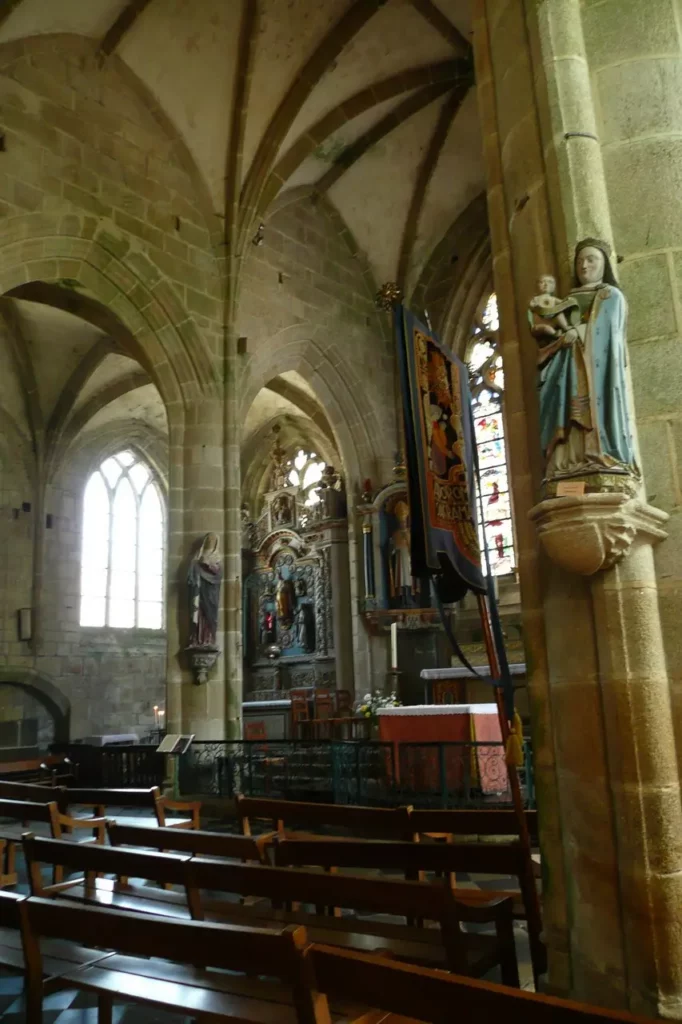
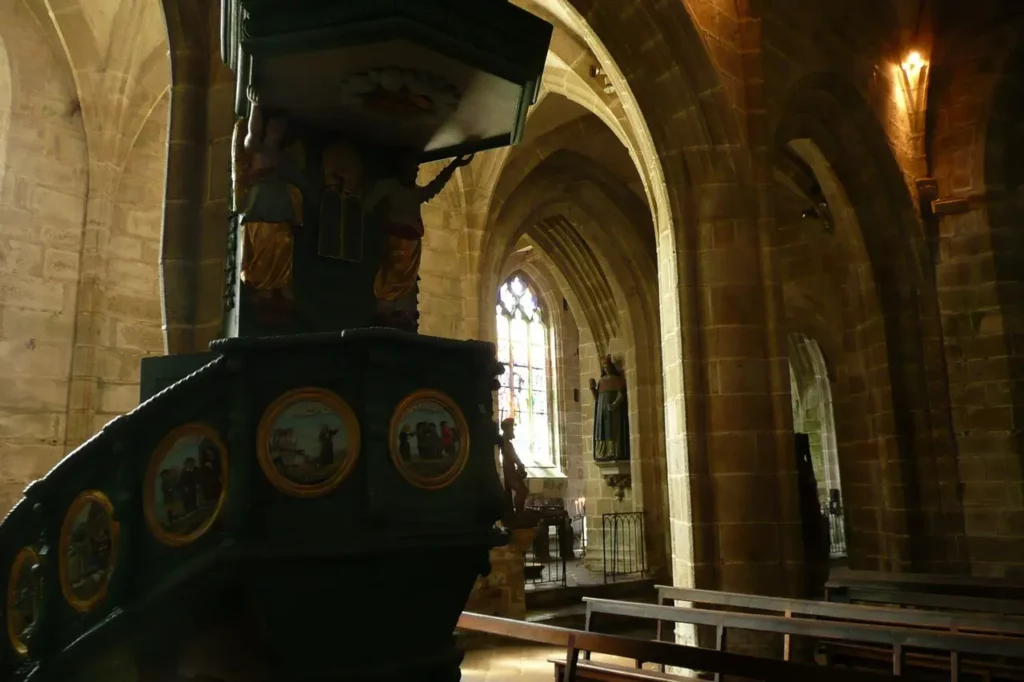
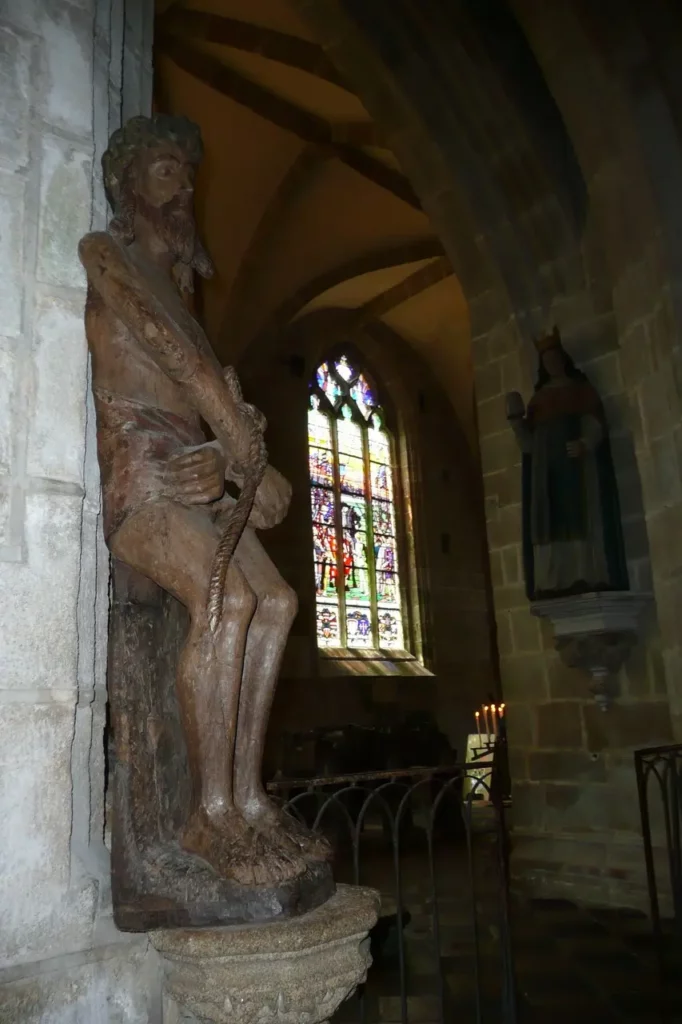
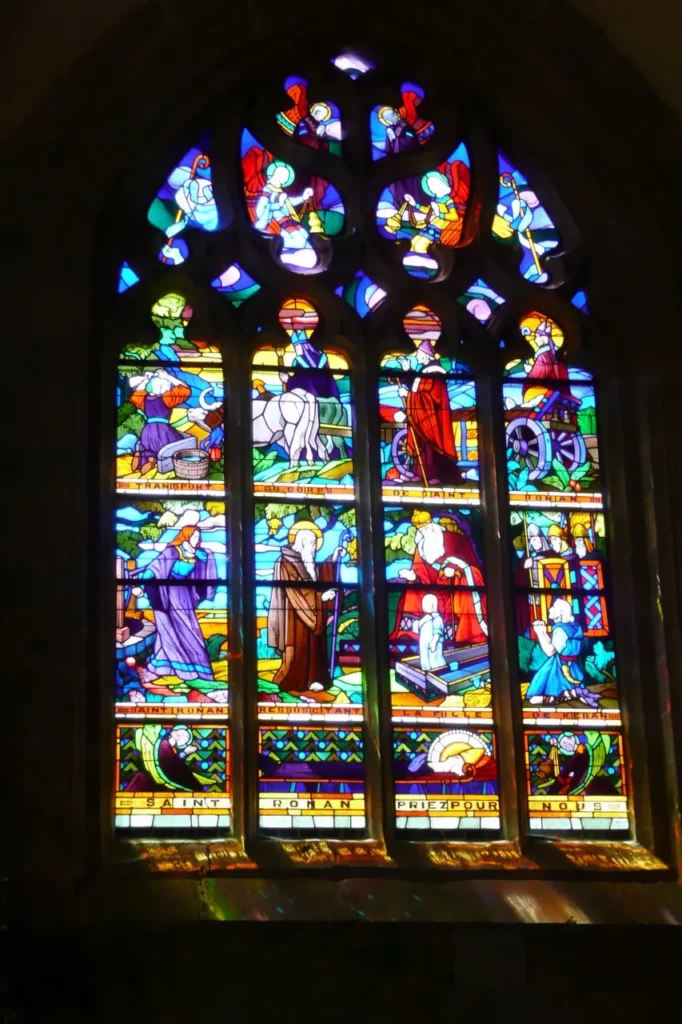
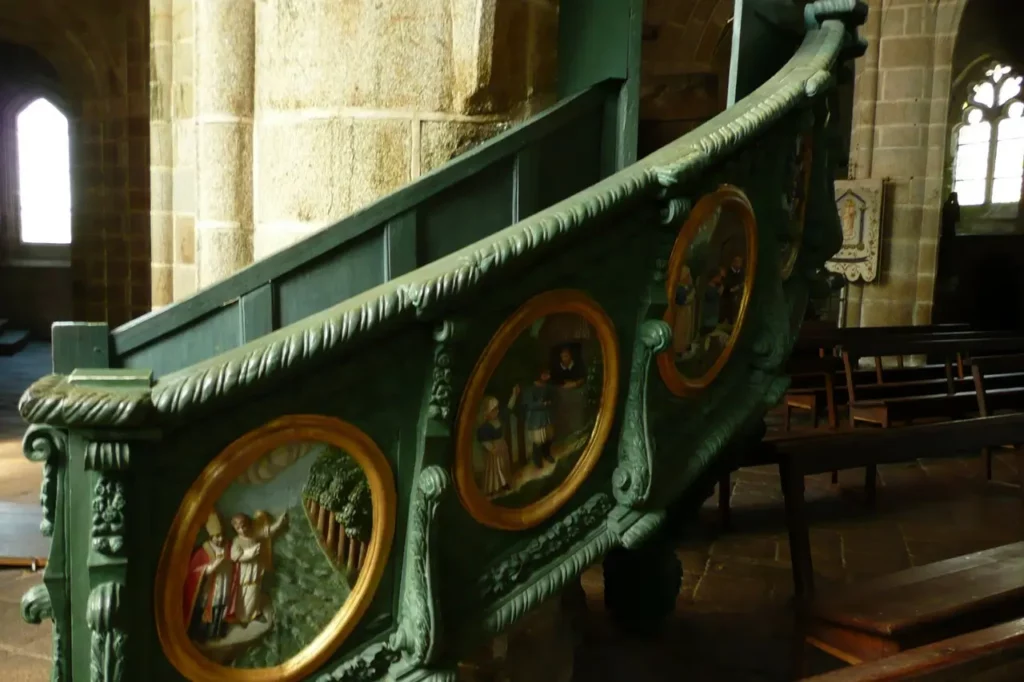
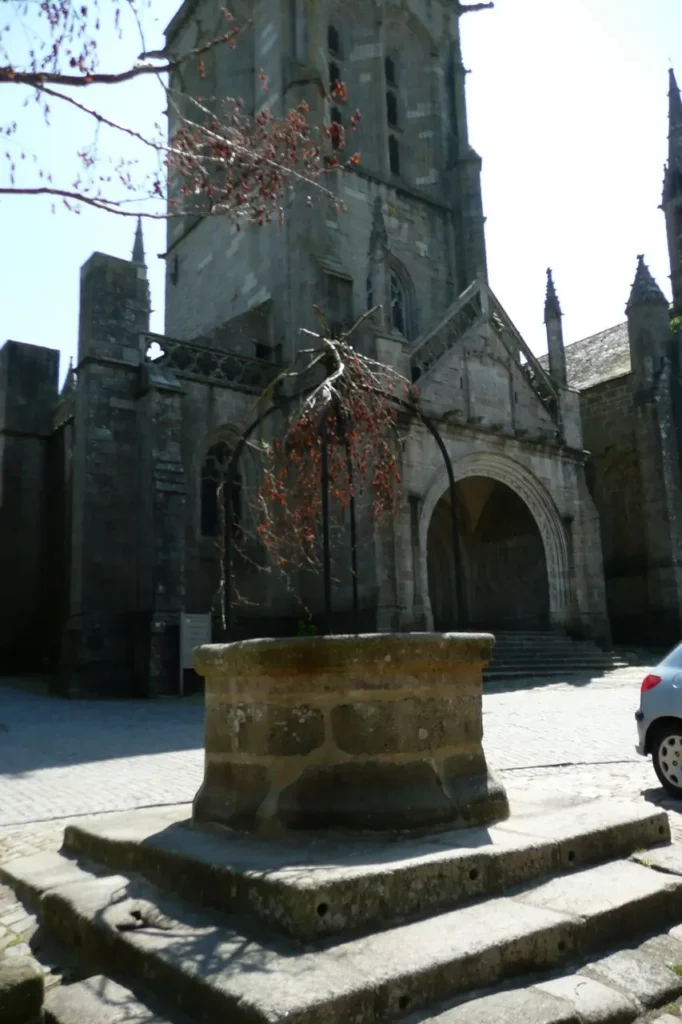
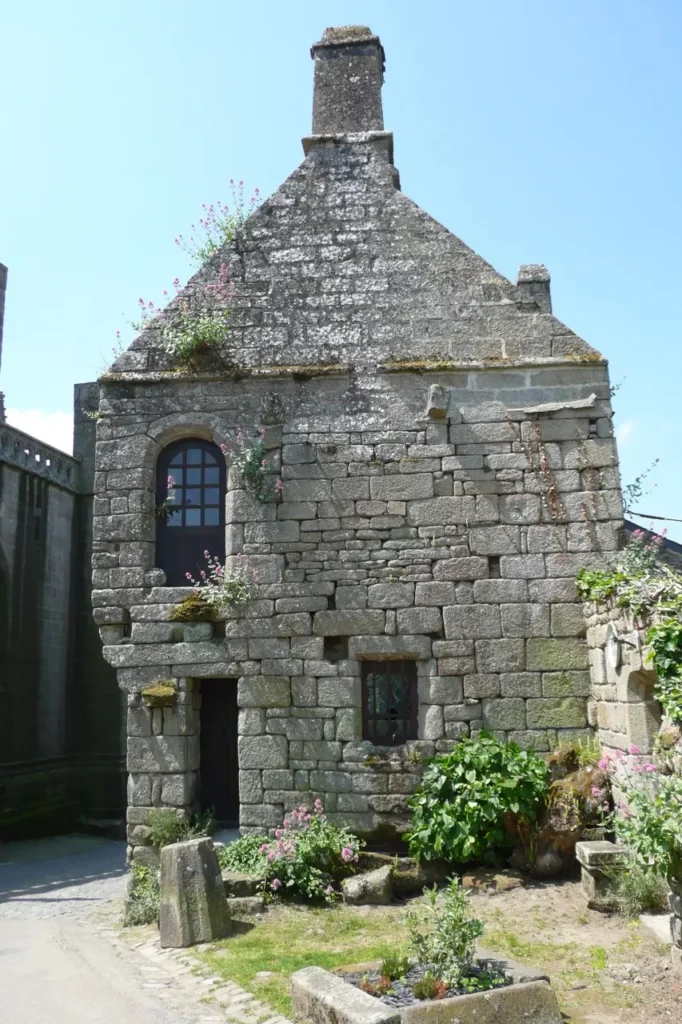
In general, all the short time it takes to explore the town, we did not leave the feeling of decoration. Filmmakers, by the way, have long noticed these scenery and more than one film was shot here.
To see all the sights, and this is the church of St. Ronan, three chapels and a dozen short streets, it will take one and a half to two hours. The map can be downloaded from the city website.
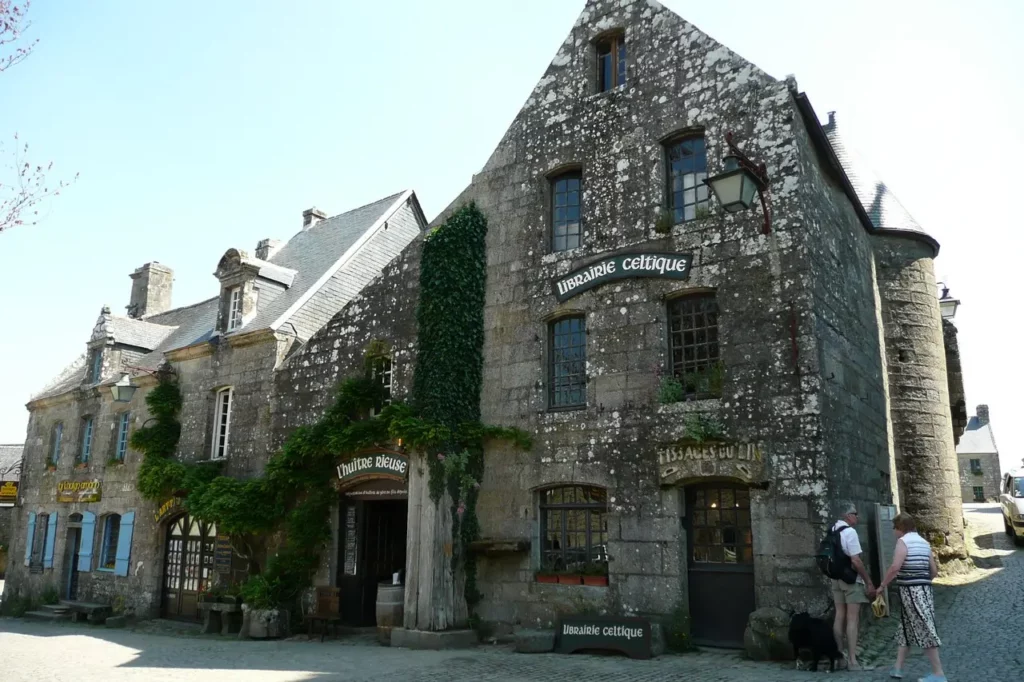
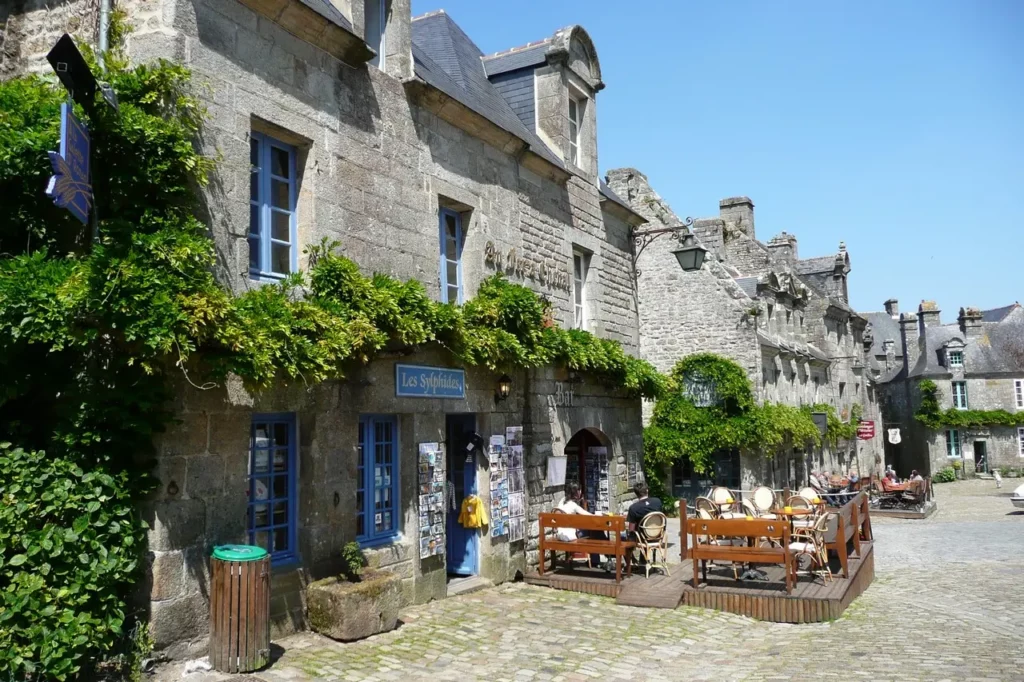
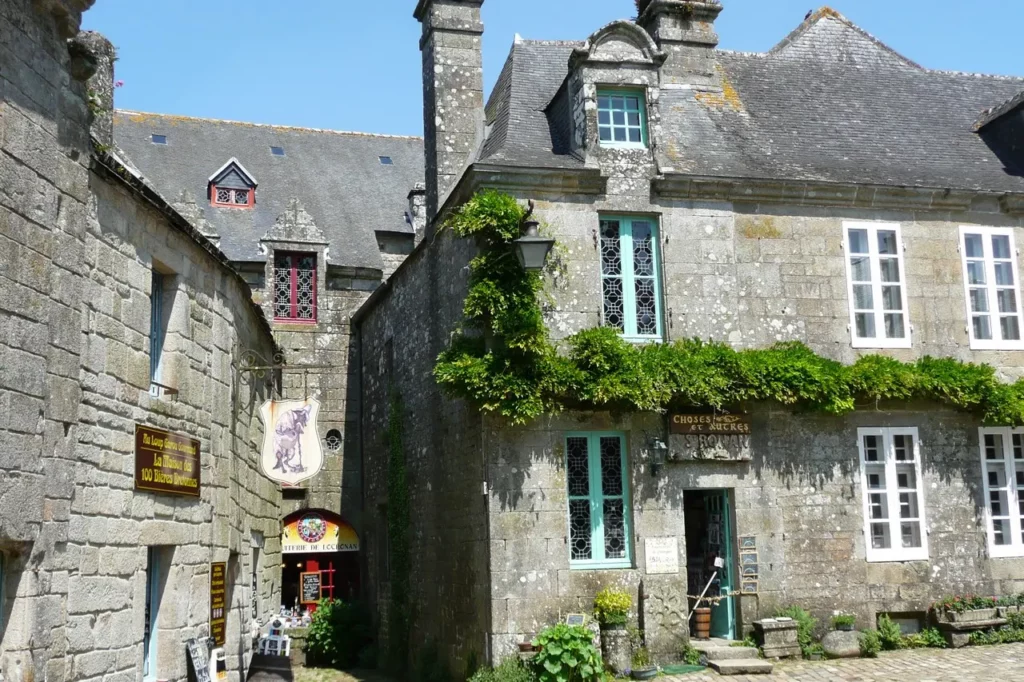
What to see nearby
Plougastel-Daoulas, Daoulas (3, 4)
Parish area and abbey of the Augustinians
Bus 19, 23 from Brest, bus 31 Quimper – Brest, 32 Le Faou – Brest
Landerneau (7)
Rohan bridge, built up with residential buildings and shops. Old town with houses of the 17th century.
Train

Cap Raz (Pointe du Raz)
The most western and very picturesque cape of France. On the way, you can visit Pont-Croix (8, small town with character, 13th century church)
and/or Audierne (9) – large port with maritime museum and aquarium L’Aquashow
There – by bus 53 from Quimper, back – bus 52+51 or vice versa
Quimper
Quimper (10) was founded by the Gauls, then occupied by the Romans. Old houses, fortifications and walls with towers have been preserved.
Attractions, in addition to the old city, are
the Cathedral of St. Corentina 13-14 centuries, built on the site of a Roman temple,
a museum of Breton art and folk traditions,
a museum of fine arts with a collection of Flemish, Italian, French artists, especially artists of the Pontavente school.
Quimper is also known for its faience.
Concarneau (11)
Old city-fortress. Keriolet Castle 2 km from the city (Chateau de Keriolet)
bus 43 Quimper – Concarneau or train and bus 4 Rosporden – Concarneau
Pont-Aven (12)
A picturesque city, chosen by artists of the late 19th – early 20th century.
bus 2 from Concarneau
Other posts about Brittany – #britanny.
Do you enjoy the site without cookies? This means that I work for you at my own expense.
Perhaps you would like to support my work here.
Or change your cookie settings here. I don’t use personalized ads

